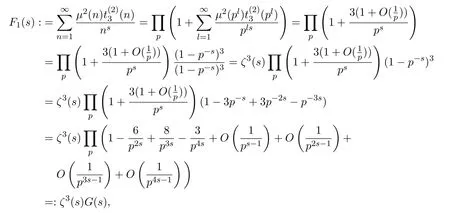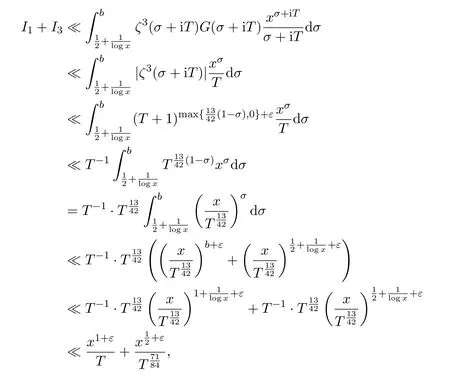The average estimate of the divisor function of integer matrices on square-free numbers
2019-06-24YangXiaoweiLaoHuixue
Yang Xiaowei,Lao Huixue
(School of Mathematics and Statistics,Shandong Normal University,Ji′nan 250014,China)
Abstract:Using the classical method in analytic number theory,this paper investigates the mean value of the divisor function of integer matrices on square-free numbers,and establishes an asymptotic formula,which generalized the related result.
Keywords:asymptotic formula,square-free number,divisor function of integer matrix
1 Introduction
LetMk(Z)denote the ring of integer matrices of orderk.We denote the number of different representations of matrixC∈Mk(Z)in the form

References[1-3]studied the distribution of values of the function

Reference[5]gave bounds for second moment of error term∆2(x)

Study of the distribution of functiont(k)(n)fork≥3 has some difficulties.Reference[6]constructed the generating Dirichlet series fort(3)(n)

and obtained the asymptotic formula

Reference[7]established the asymptotic formula for a summatory function of the number of representations of matrices fromM2(Z)in the formC=A1A2A3,

and estimated the error term of this asymptotic formula,where
In this paper,we study the distribution of(n)on the square-free numbers.In detail,we have the following result.
Theorem1.1 Asx→∞,the asymptotic equality

holds,where the sum∑′indicates that the summation runs over square-free numbers.
2 Preliminaries
This section is devoted to give some preliminary results for the proof of Theorem 1.1.
Lemma2.1[7]For each primep>p0,m∈N,

Lemma2.2[5,8-9]For anyε>0,we have

uniformly for|t|>10,T>10 and≤σ≤1+ε,and

3 Proof of Theorem 1.1
ProofNote that,whereµ(n)is the Mbius function.
First,we will find the Dirichlet generating series corresponding to.By multiplicativity of function(n)and applying Lemma 2.1,we obtain whereG(s)converges absolutely for Res>.

Using Perron′s formula[10],we have

In addition,it is clear that,whereεis an arbitrarily small positive number.
Consider the contour Γ at the points±iT,b±iT.We obtain the following relation

whereP2(u)is the second-degree polynomial with computable coefficients.
Using the estimate of zeta-function(3)in Lemma 2.2,we have

where

and

for sufficiently largex.
Thus we can derive the estimate on the horizontal lines

In addition,it is clear that


Thus,we have

SettingT=x,we obtain the final result

The proof of Theorem 1.1 is complete.
